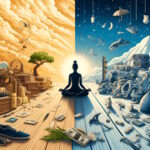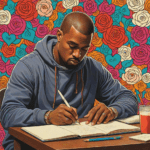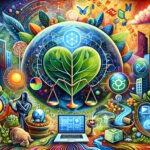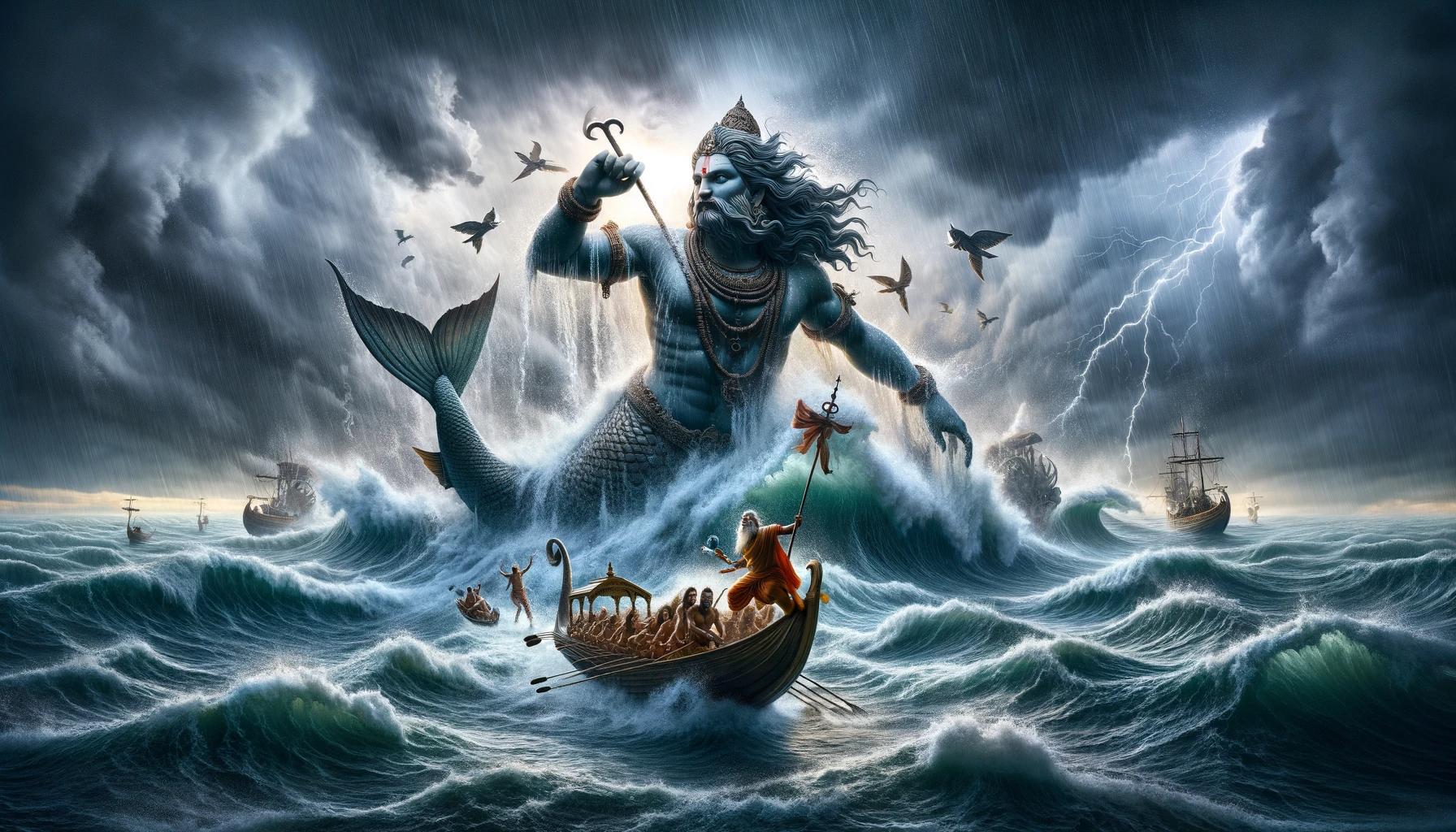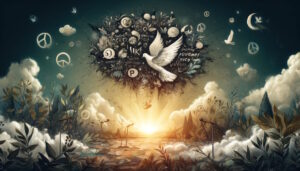Ancient Flood Myths
Flood myths are prevalent in many ancient cultures around the world, each with its unique story but often sharing common themes. Here’s a comprehensive list of some of these cultures and their flood myths:
Mesopotamian Flood Myths:
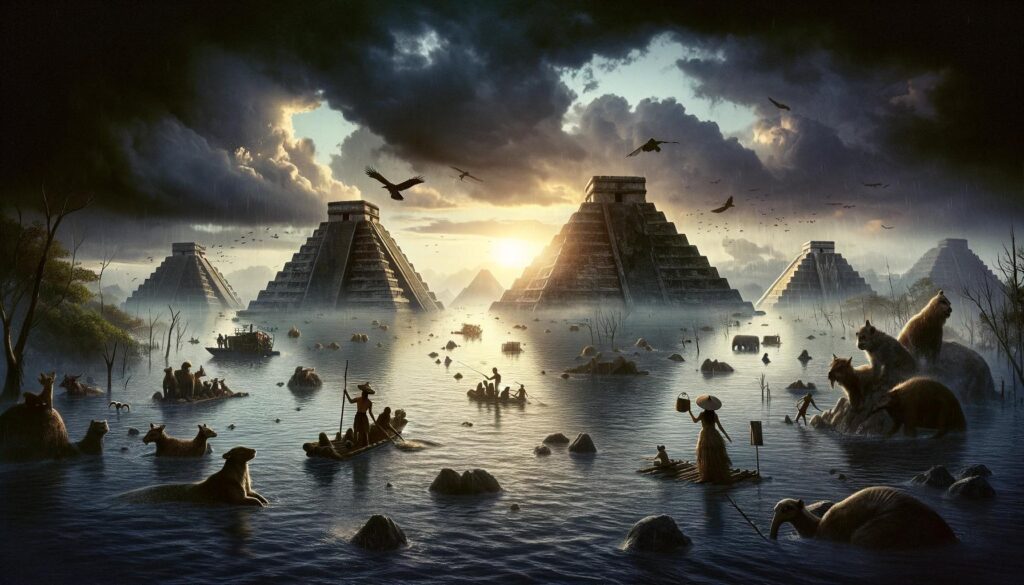
The Sumerian Epic of Ziusudra
In this Sumerian story, Ziusudra, a king and priest, learns of the gods’ plan to destroy humanity with a flood. He is instructed to build a huge boat to save himself, his family, and the seed of all living creatures.
The Akkadian Epic of Atrahasis
The god Enlil decides to reduce the human population with a plague, famine, and finally a flood. Atrahasis, a wise man, is warned by the god Ea (Enki) in a dream to build a boat to save himself and the animals.
The Babylonian Epic of Gilgamesh
In this epic, Utnapishtim recounts to Gilgamesh how he survived a great flood. He was instructed by the god Ea to build a boat to save his family, craftsmen, and animals from the flood sent by the gods.
Utnapishtim describes his experience: “I loaded into her all that I had of gold and of living things, my family, my kin, the beasts of the field both wild and tame, and all the craftsmen” (Gilgamesh, Tablet XI).
Hebrew/Christian Flood Myth:
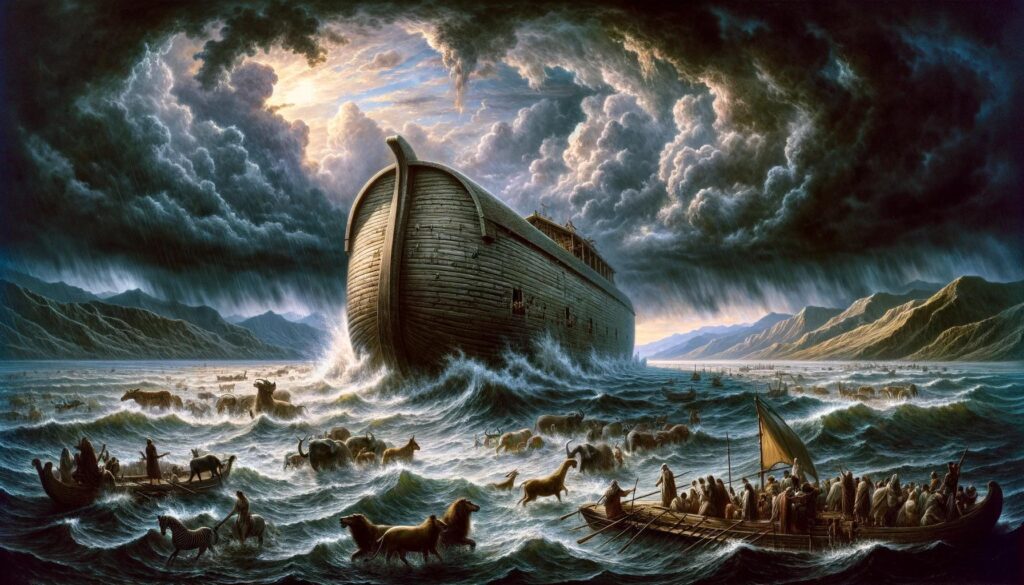
The story of Noah’s Ark in the Book of Genesis, where Noah is instructed by God to build an ark to save his family and two of every kind of animal from the flood.
God sees the wickedness of humanity and decides to bring a flood to cleanse the earth. Noah is found righteous and is instructed by God to build an ark to save himself, his family, and pairs of all animal species.
The instructions to Noah are clear: “Make thee an ark of gopher wood; rooms shalt thou make in the ark, and shalt pitch it within and without with pitch” (Genesis 6:14).
Greek Mythology:
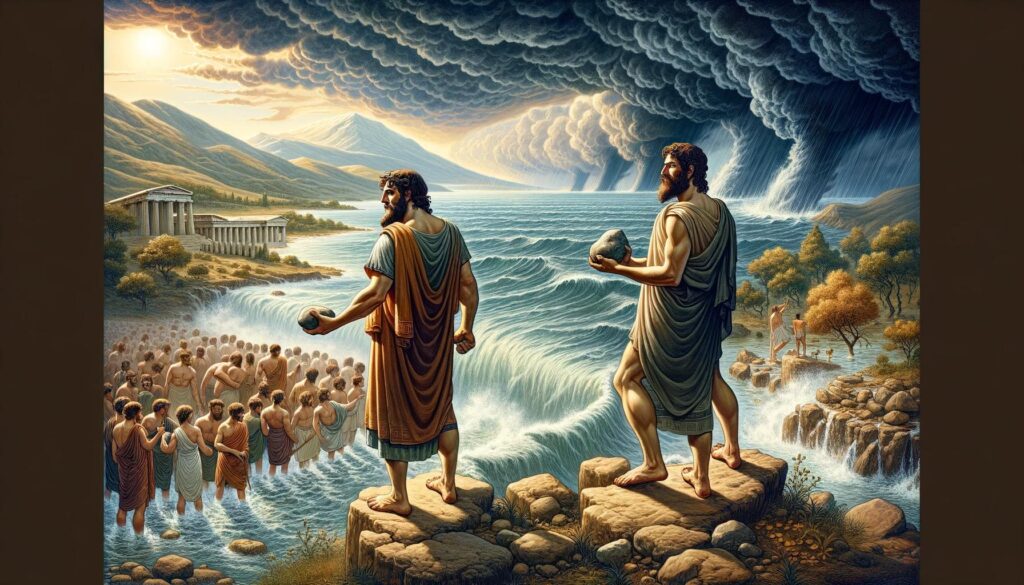
The story of Deucalion and Pyrrha. After humans angered Zeus, he decided to flood the earth. Deucalion and Pyrrha survived in a chest and repopulated the world.
In Greek mythology, Zeus decides to end the Bronze Age with a great flood due to humanity’s wickedness. Deucalion, son of Prometheus, and his wife, Pyrrha, are warned and build a chest to survive the flood. After the flood, they repopulate the earth by throwing stones over their shoulders, which turn into men and women.
“Prometheus told his son, Deucalion, to build a chest and fill it with provisions. For nine days and nine nights, Deucalion and Pyrrha floated over the water.”
Hindu Mythology:

The story of Manu in the Matsya Purana. Manu is warned by a fish (an avatar of the god Vishnu) to build a boat to survive a great deluge.
In this story, Manu, the first man, saves a small fish who turns out to be the god Vishnu. The fish warns Manu of an impending great flood and instructs him to build a boat. Manu survives the flood, attached to the horn of the fish, which is actually Vishnu in one of his avatar forms.
As a paraphrase from the Matsya Purana, it goes: “I will protect you from the flood, O Manu. Build a strong boat and when the waters rise, enter into it.”
Chinese Mythology:

The story of Emperor Yao and the Great Flood, which was controlled by the efforts of Yu the Great, who dredged rivers.
This flood myth involves Emperor Yao and the efforts of Yu the Great. The great flood spanned generations and was finally controlled by Yu, who dredged rivers and created canals to divert the floodwaters, leading to the establishment of the Xia dynasty.
An indirect reference from ancient texts would be: “Yu the Great worked tirelessly, dredging the great rivers, to save the land from the relentless flood.”
Mayan Mythology:
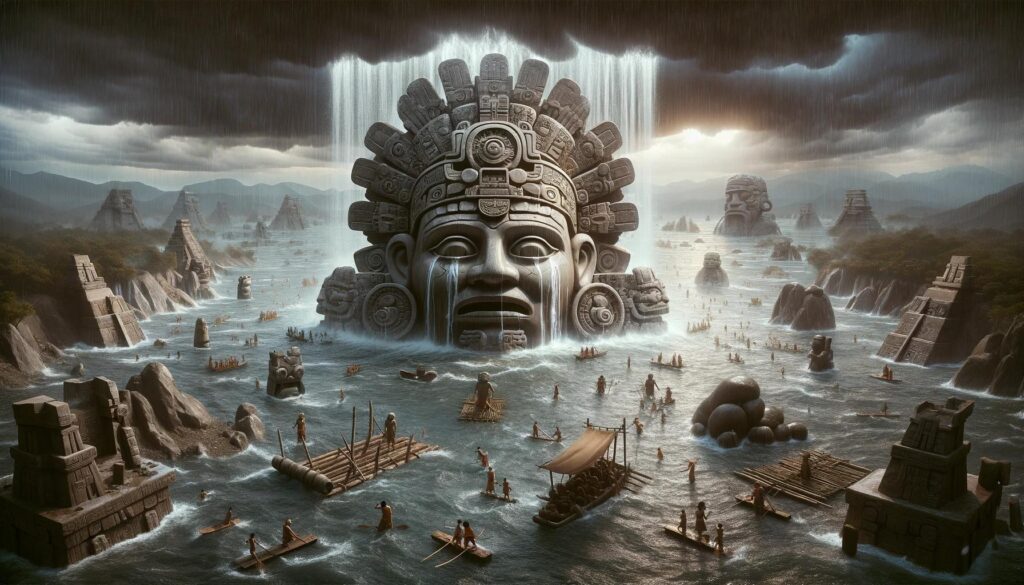
The Popol Vuh includes a story of a great flood sent by the gods to destroy the wooden people, the second creation of mankind, who failed to worship the gods.
In the Mayan sacred text, the Popol Vuh, the gods, dissatisfied with their creation, the wooden people, decide to destroy them with a flood. These beings lacked souls and did not worship the gods. After the flood, new humans are created from maize.
“The face of the earth darkened and a black rain began to fall, day and night. For those wooden creatures, there was no escape from the flood.”
Norse Mythology:
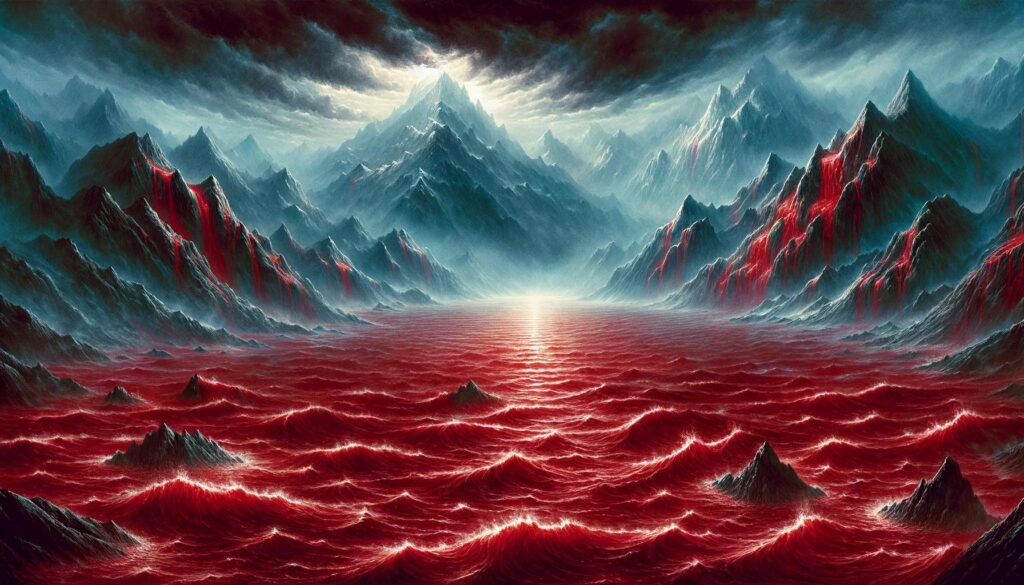
In the Edda, there’s a story of a flood that arises from the blood of the slain giant Ymir, covering all but the highest mountains.
In Norse mythology, the giant Ymir is killed by Odin and his brothers. His blood causes a great flood that drowns all the giants except for Bergelmir and his wife, who escape on a boat. From them, a new race of giants arises.
“All the frost ogres were drowned except for one, Bergelmir. He and his wife climbed onto a lumber box and saved themselves.”
Australian Aboriginal Mythology:
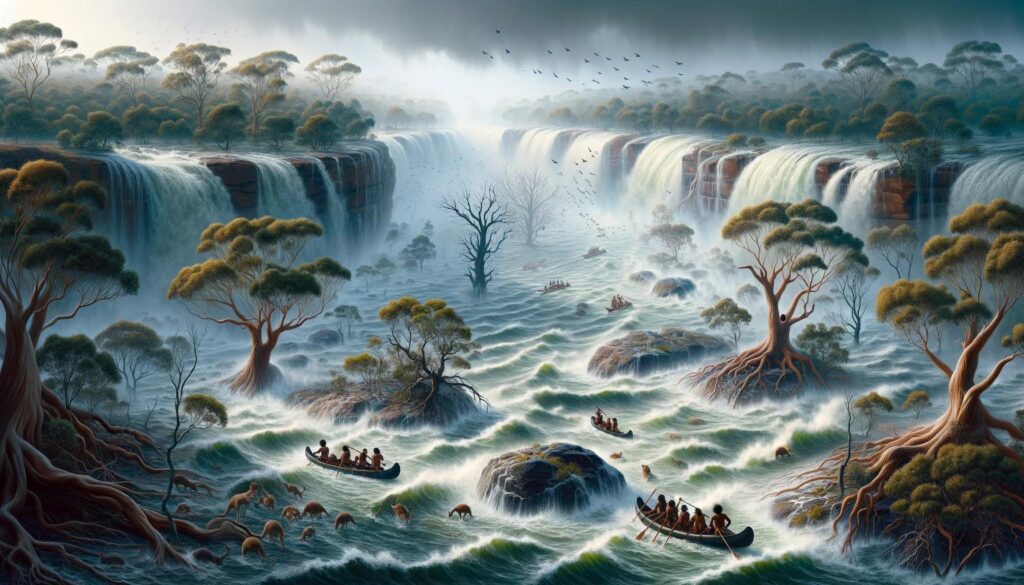
Various flood stories exist among different Aboriginal tribes, often featuring a great deluge over the land.
: Flood myths vary among Aboriginal Australian cultures. One common theme is the story of a great flood that shapes the landscape, creates rivers and lakes, and is often associated with the actions of ancestral beings or Rainbow Serpent.
Native American Mythologies:
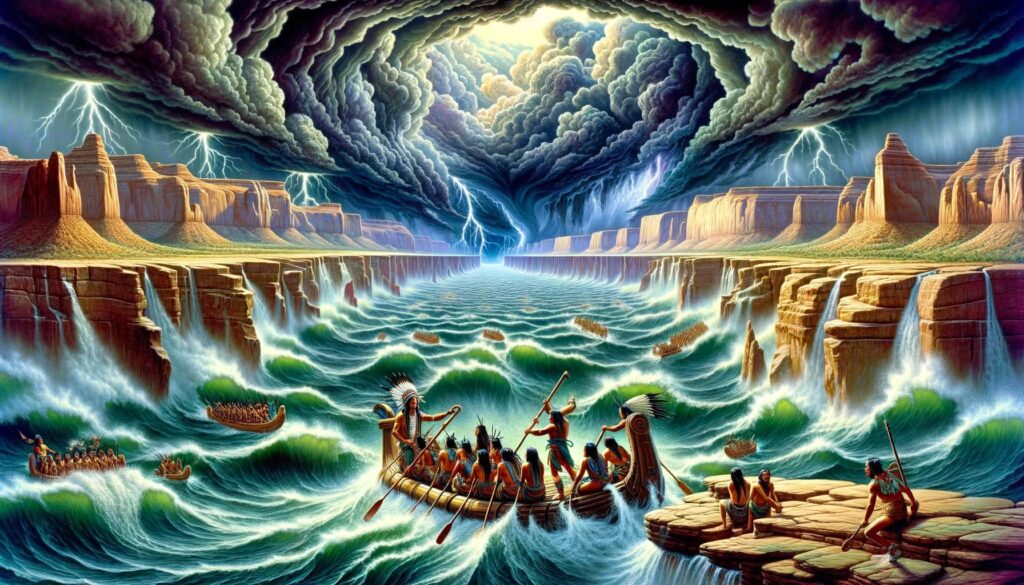
Many tribes have flood stories, such as the Hopi tribe’s story of a great flood separating the Third and Fourth Worlds.
“The world was covered by the waters of a great flood. From this water emerged the Fourth World where we now live.”
African Mythologies:
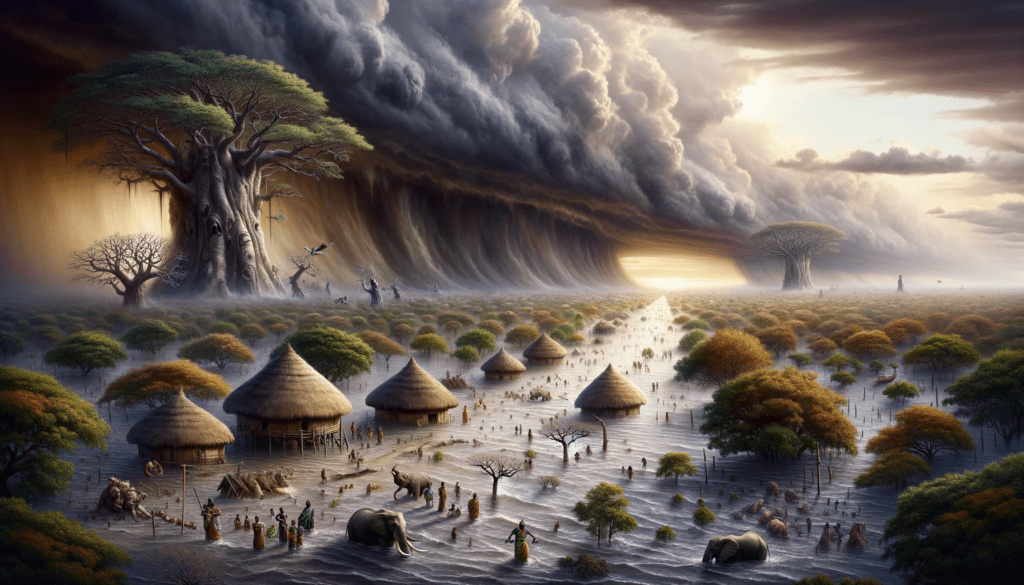
Various cultures have flood legends, such as the Yoruba people’s story of a great flood and the Dogon tribe’s belief in a world renewed after a flood.
African flood myths vary widely across the continent. The Yoruba people, for instance, have a story about a great flood and a god saving a small group of people. In Dogon mythology, the world is flooded and renewed by the god Nommo.
For the Yoruba myth, a paraphrase: “The god sent a great flood, but spared a few, who started life anew.” For the Dogon, “Nommo sacrificed parts of his body to create the sun and moon, then flooded the earth to purify it, and renewed life.”
Polynesian Mythology:
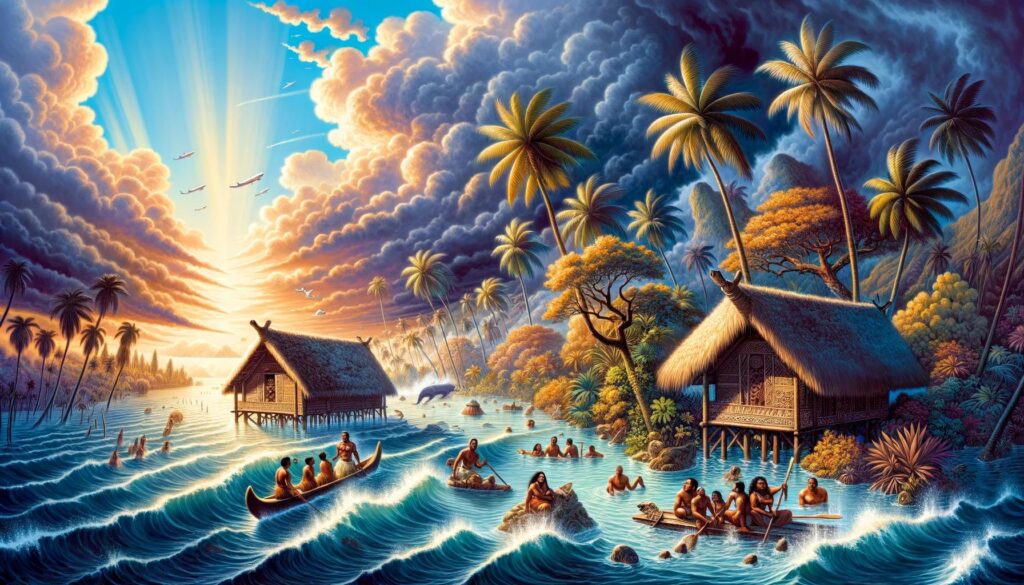
Stories in Hawaii and Maori legends in New Zealand speak of great floods.
In Polynesian cultures, flood myths often explain the creation of islands and the sea. For example, in Hawaii, there are stories of a great flood sent by the gods. Maori legends in New Zealand also speak of a world-engulfing deluge.
A Hawaiian myth paraphrase: “The gods, angered by the actions of men, sent a great flood, from which only Nu’u escaped on a raft.”
In Maori legend: “The world was once flooded, and from this great deluge, the current lands emerged.”
South American Mythologies:
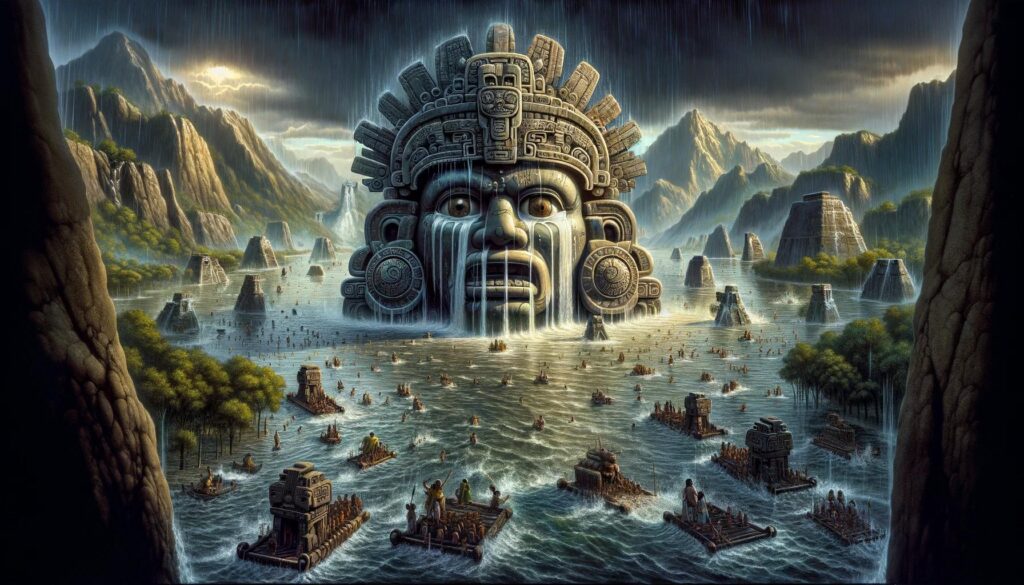
Many cultures, like the Inca, have myths about a great flood. For example, the Muisca people have the legend of Bochica, who created a pass in the mountains to release floodwaters.
Many South American cultures have flood myths. The Muisca people of Colombia tell of a flood sent by the god Chibchacum. The Inca civilization also has stories of a great flood, one of which involves the god Viracocha.
From Muisca mythology: “Chibchacum, angered by the excesses of man, caused the earth to flood.”
In Inca mythology: “Viracocha, after a great flood, created the sun, moon, stars, and renewed human life.”
These myths, while varying in details and characters, often share themes of mankind being punished for its wrongdoings, a few righteous individuals being spared, and the world being reborn anew after the flood.
These myths demonstrate how different cultures use flood narratives to explain natural phenomena, impart moral lessons, and depict the relationship between humanity and the divine. The quotes provided are paraphrased to capture the essence of these stories, as many of these narratives have been transmitted orally and lack direct textual sources.




